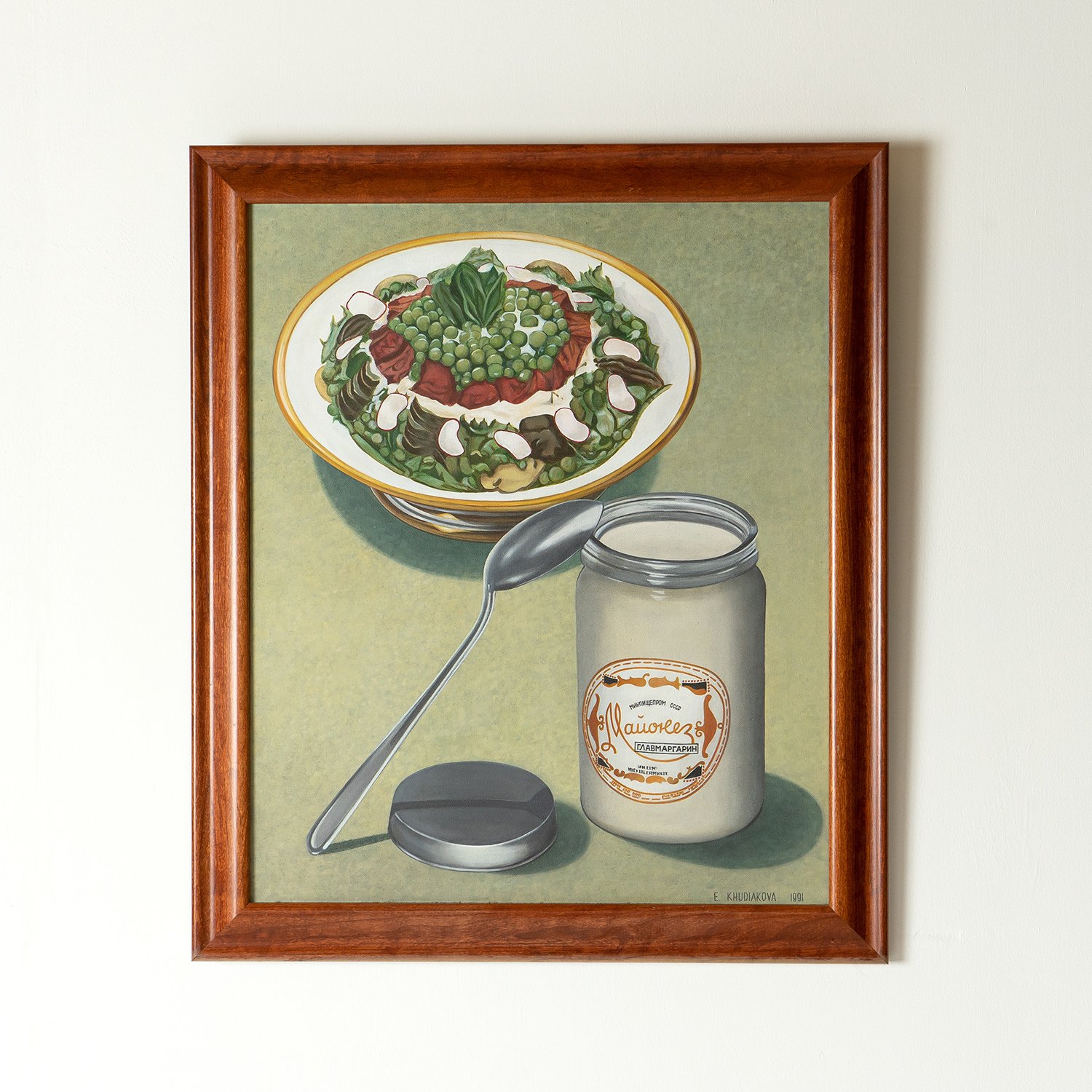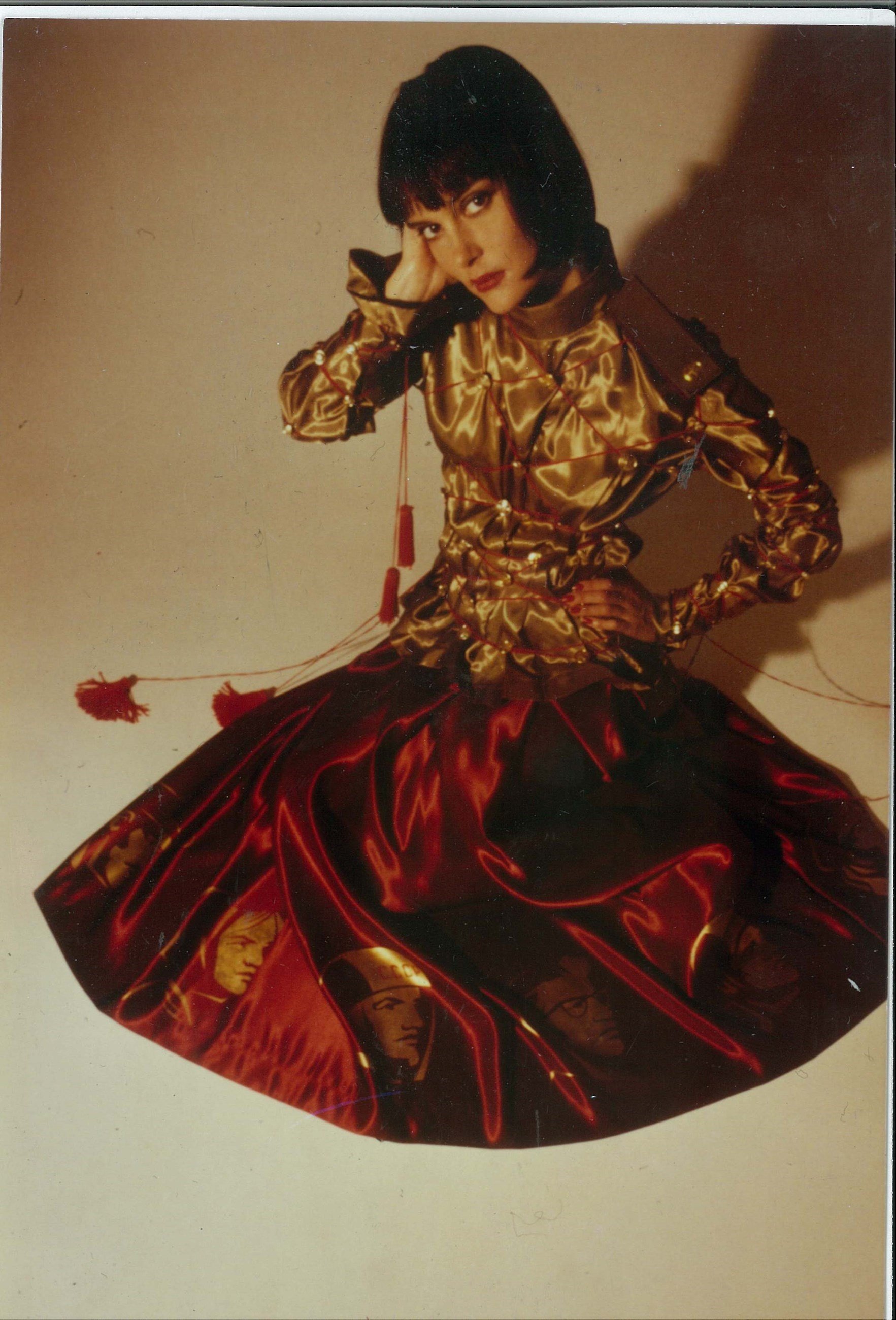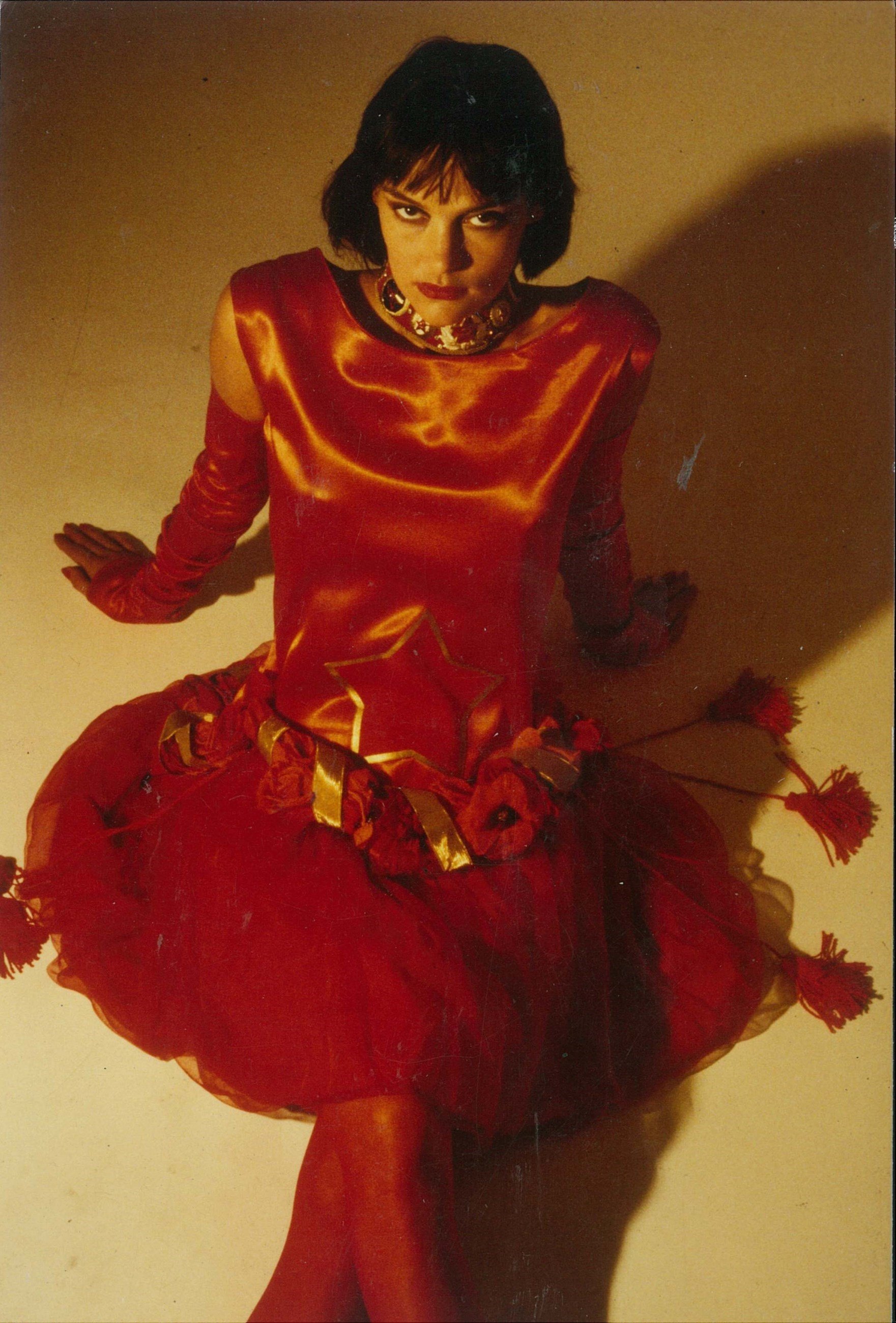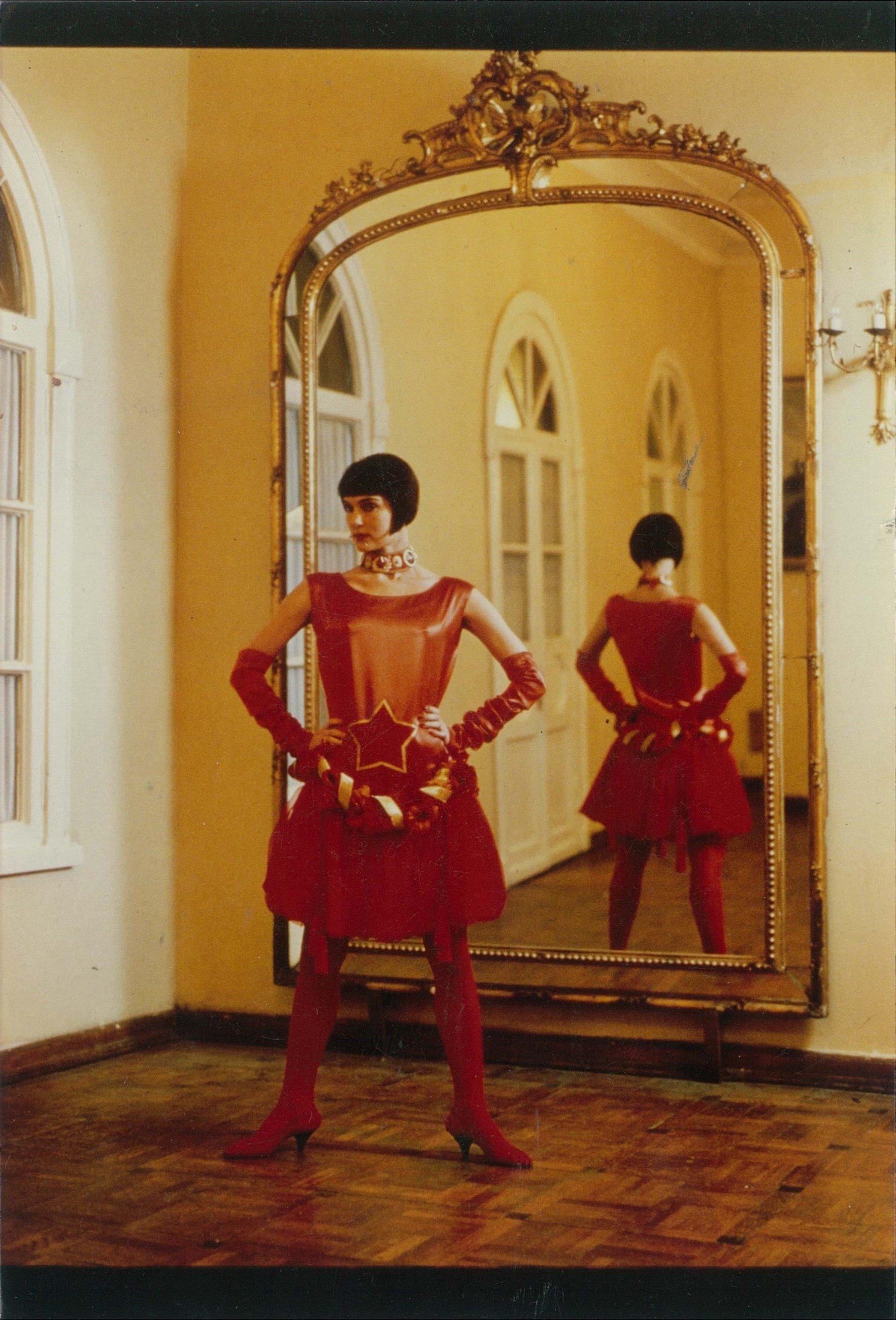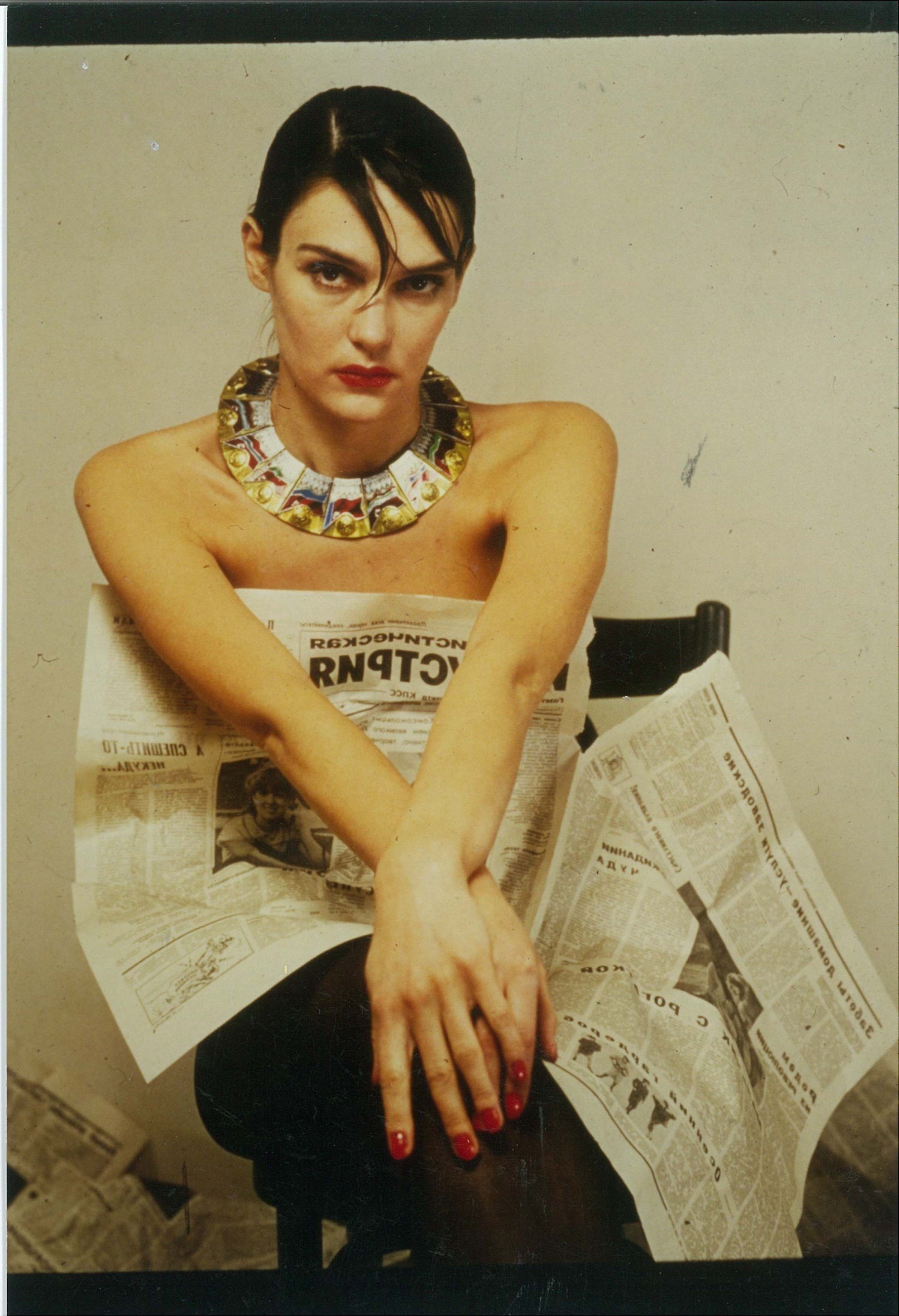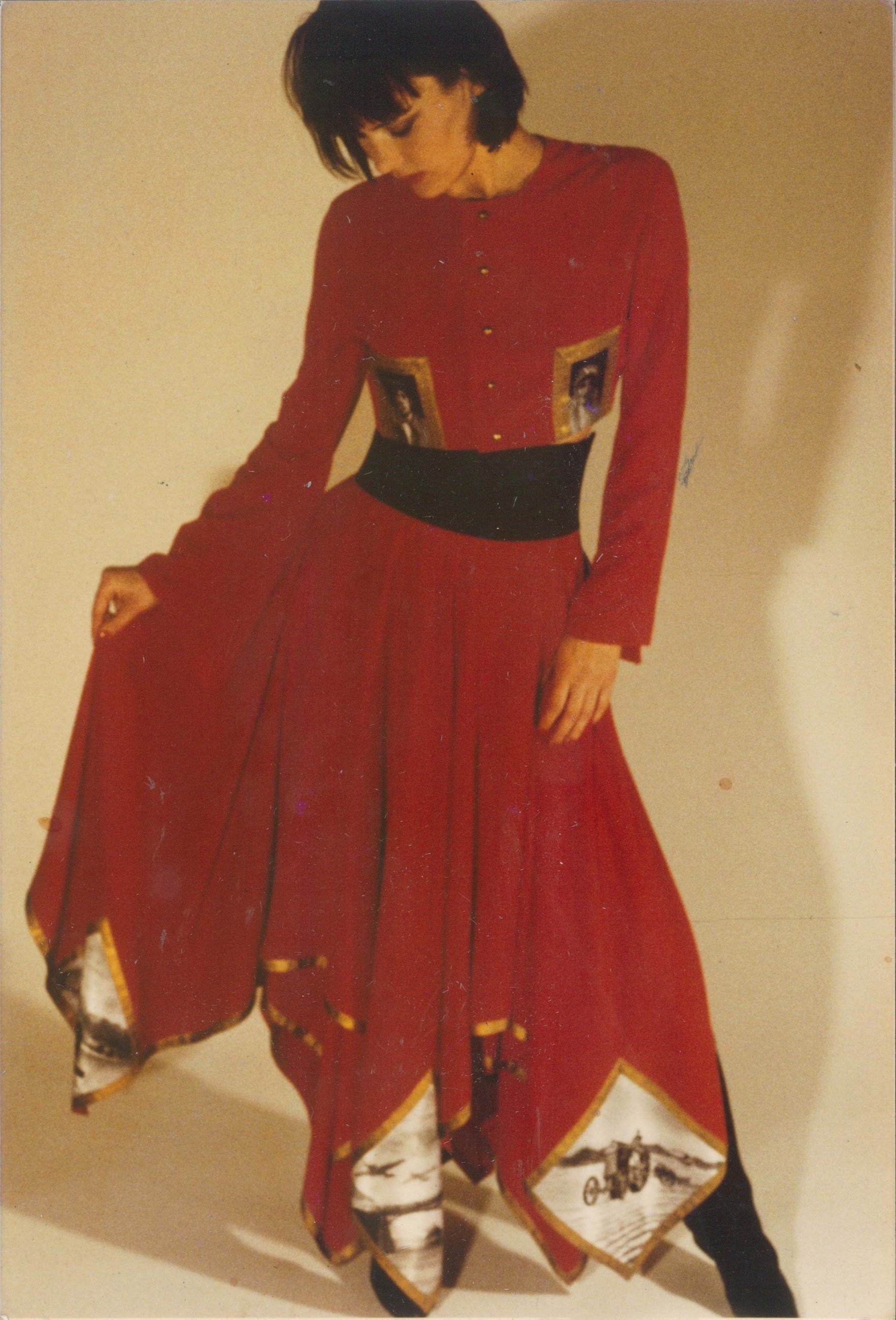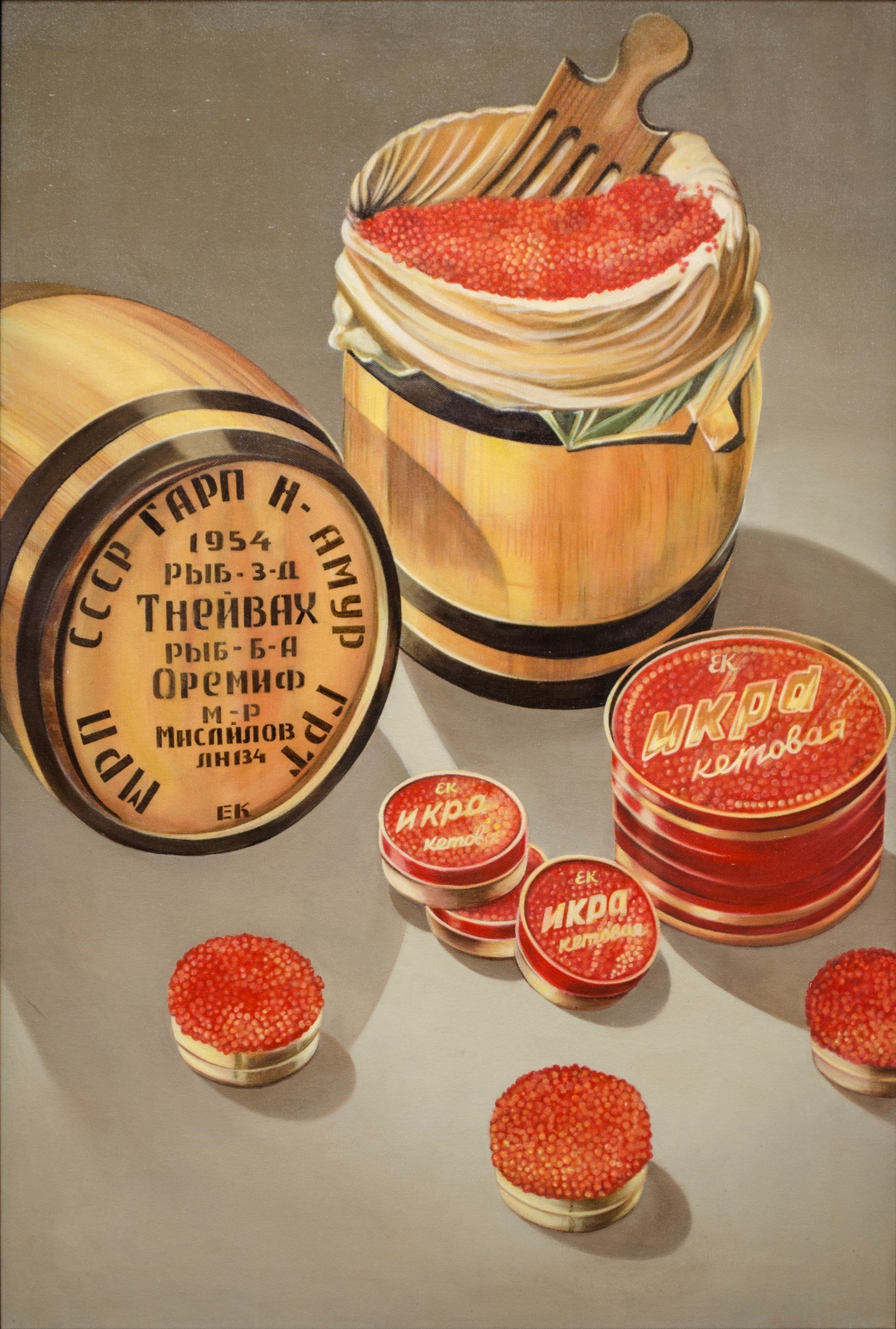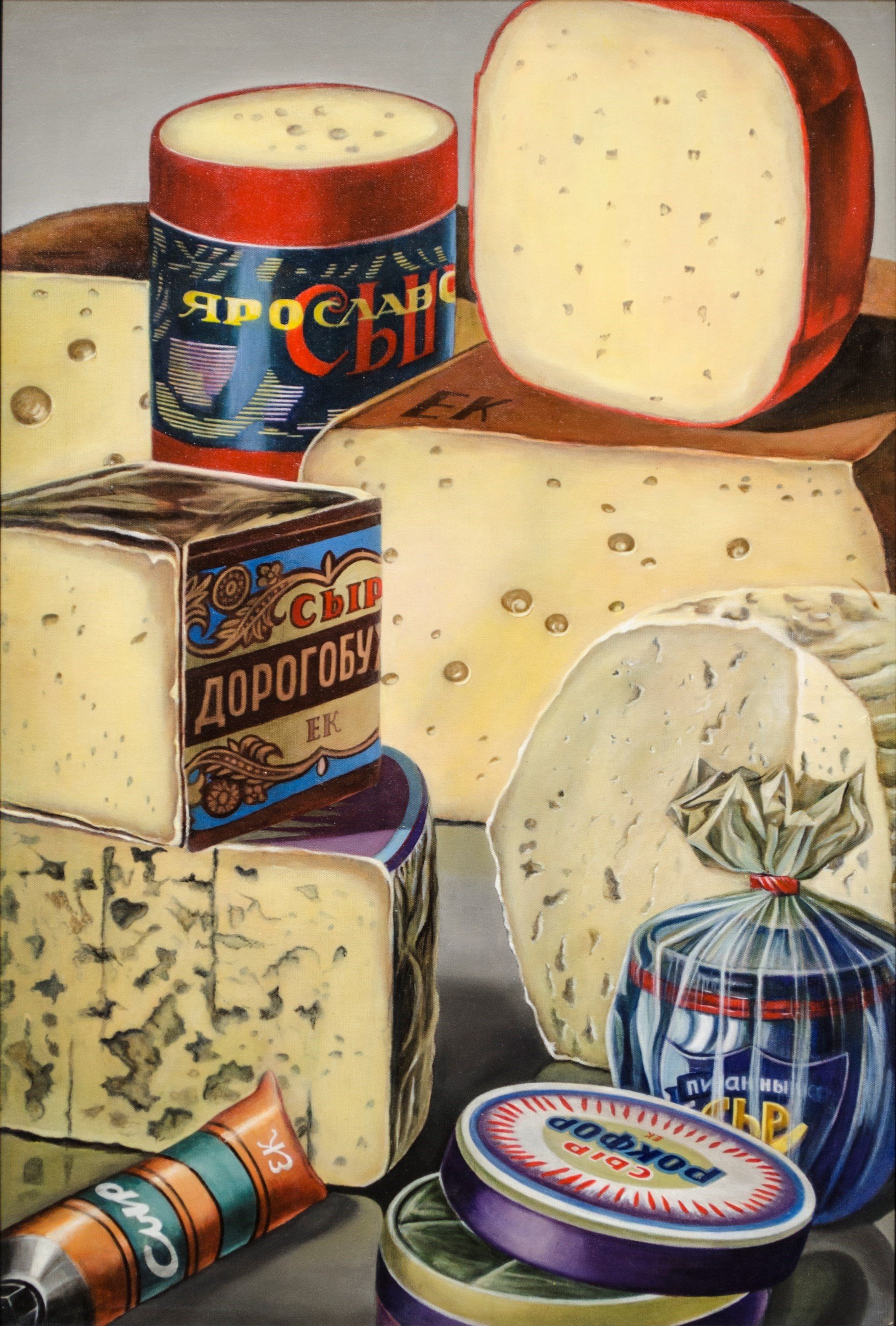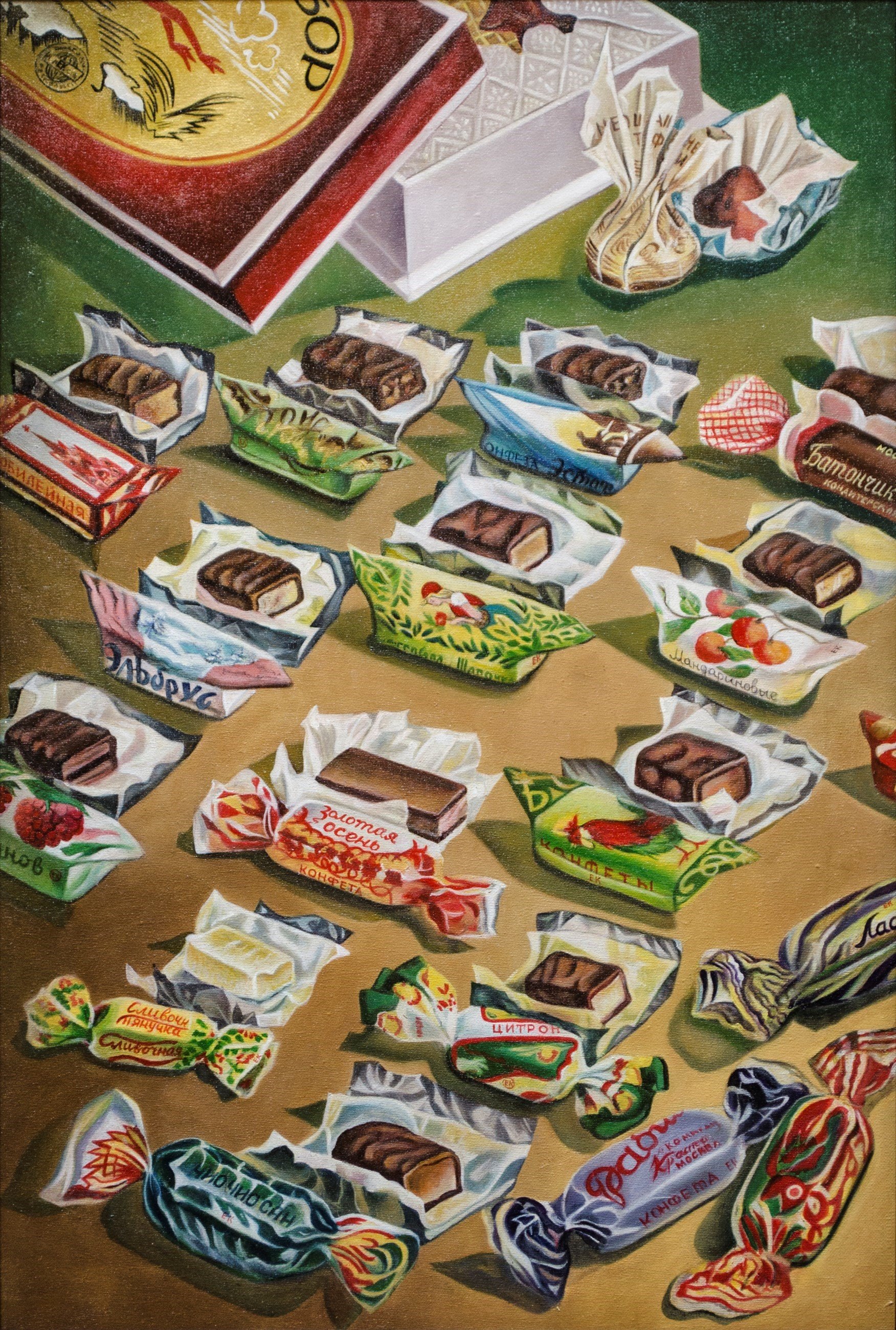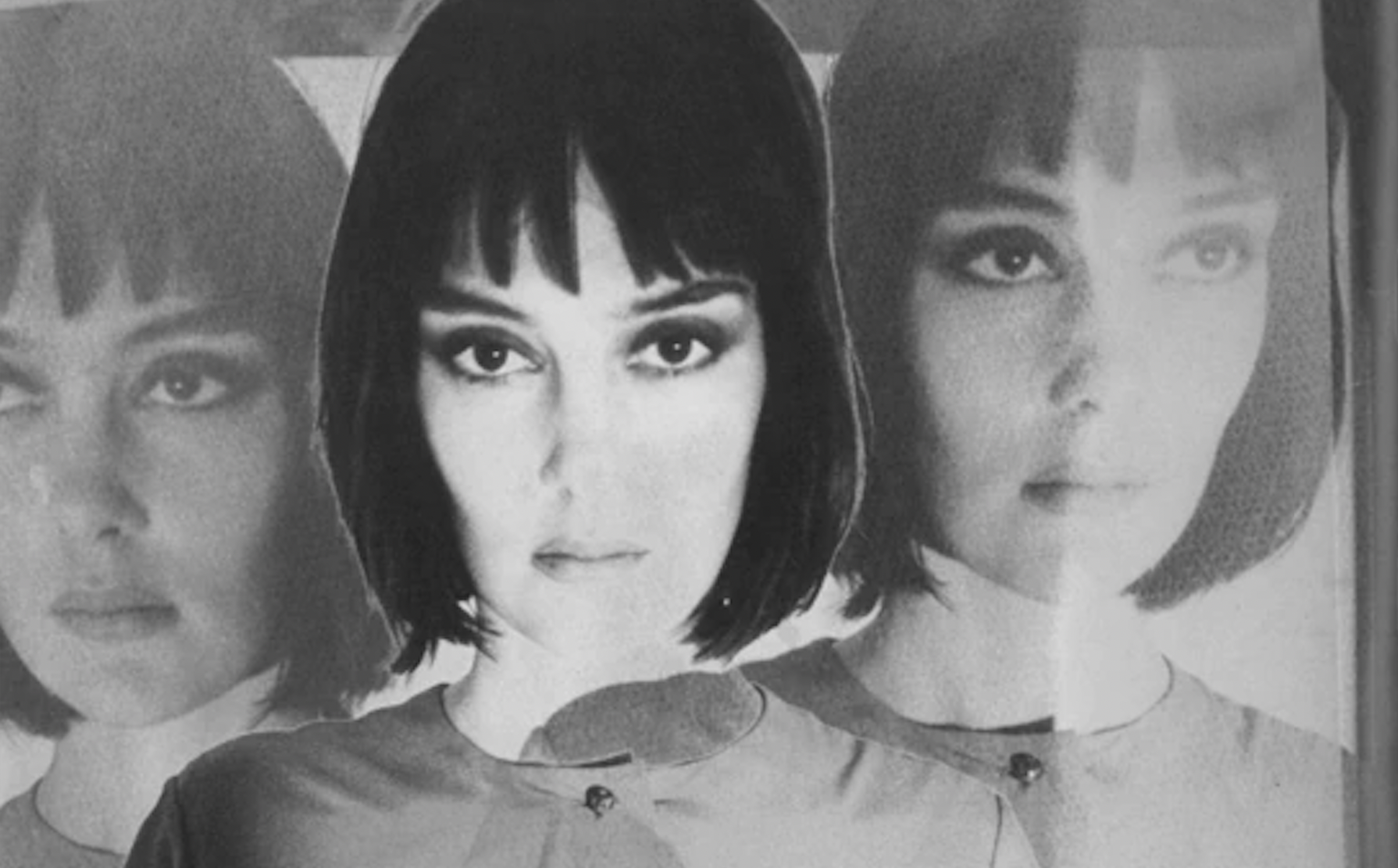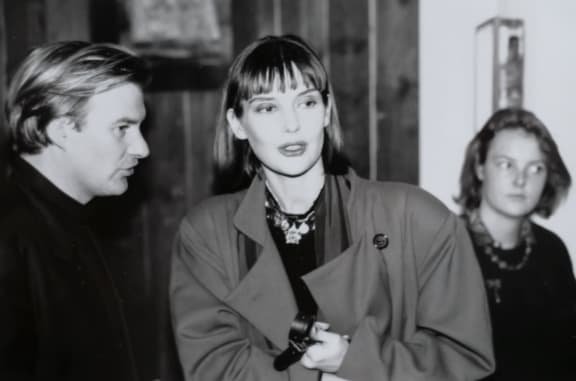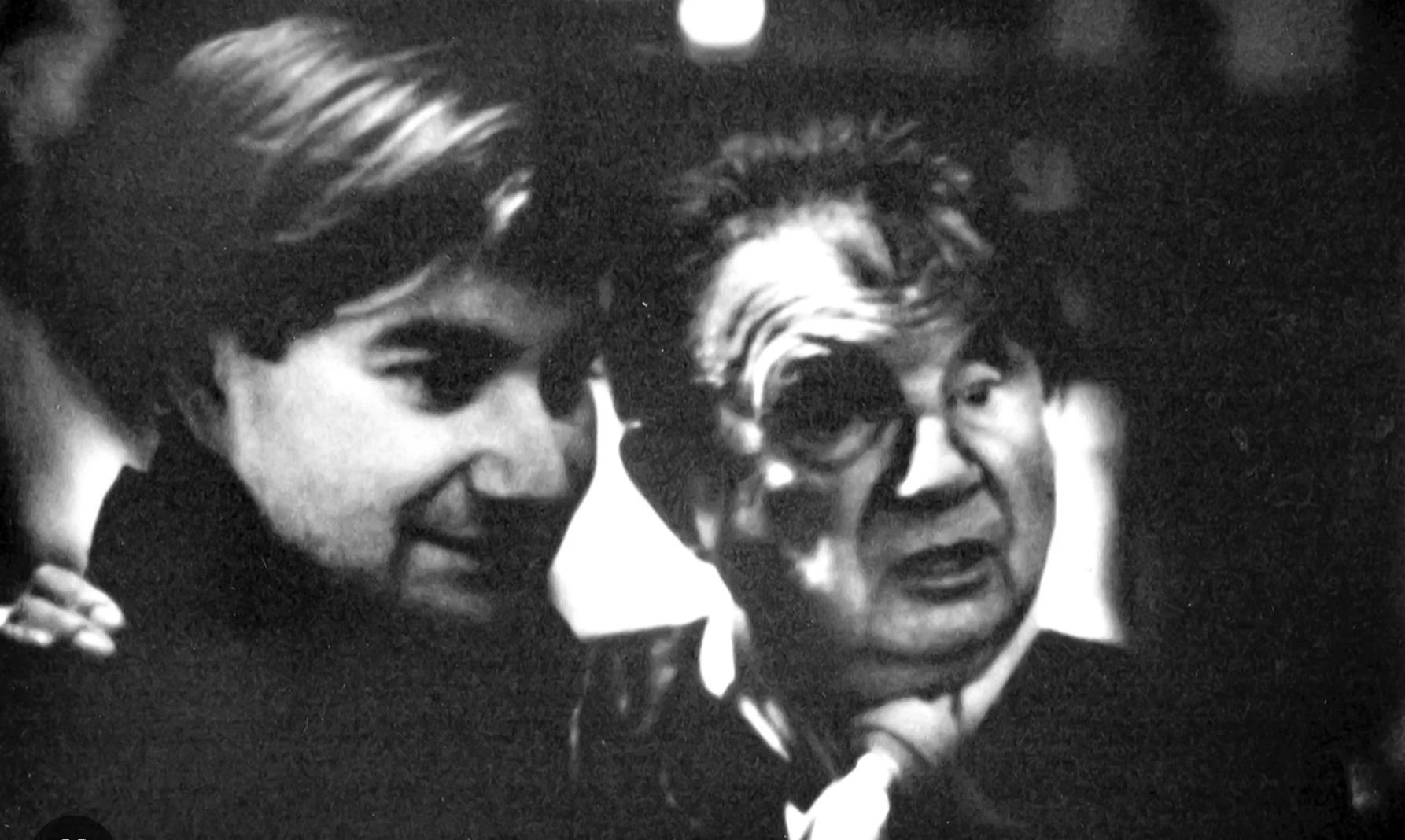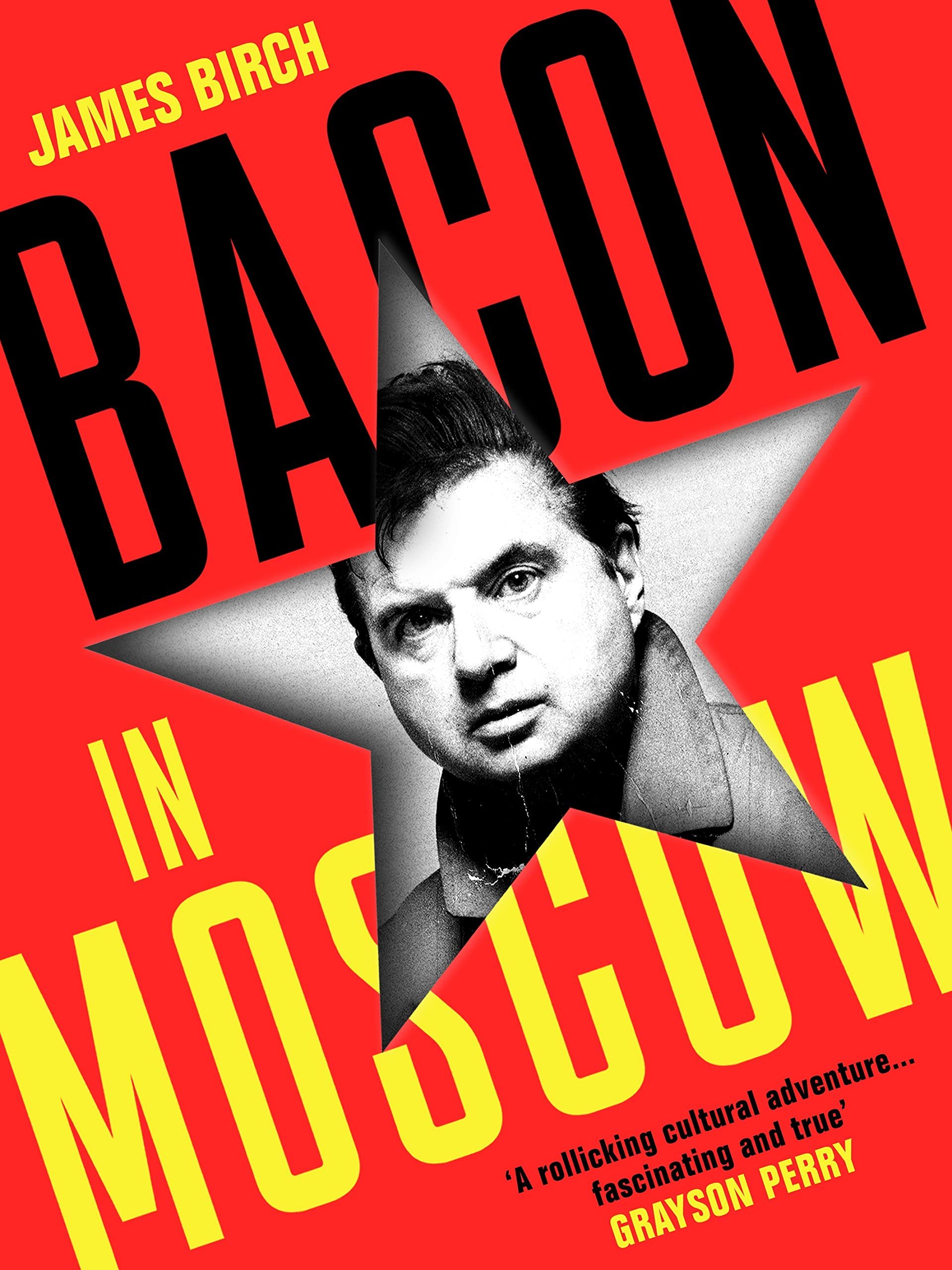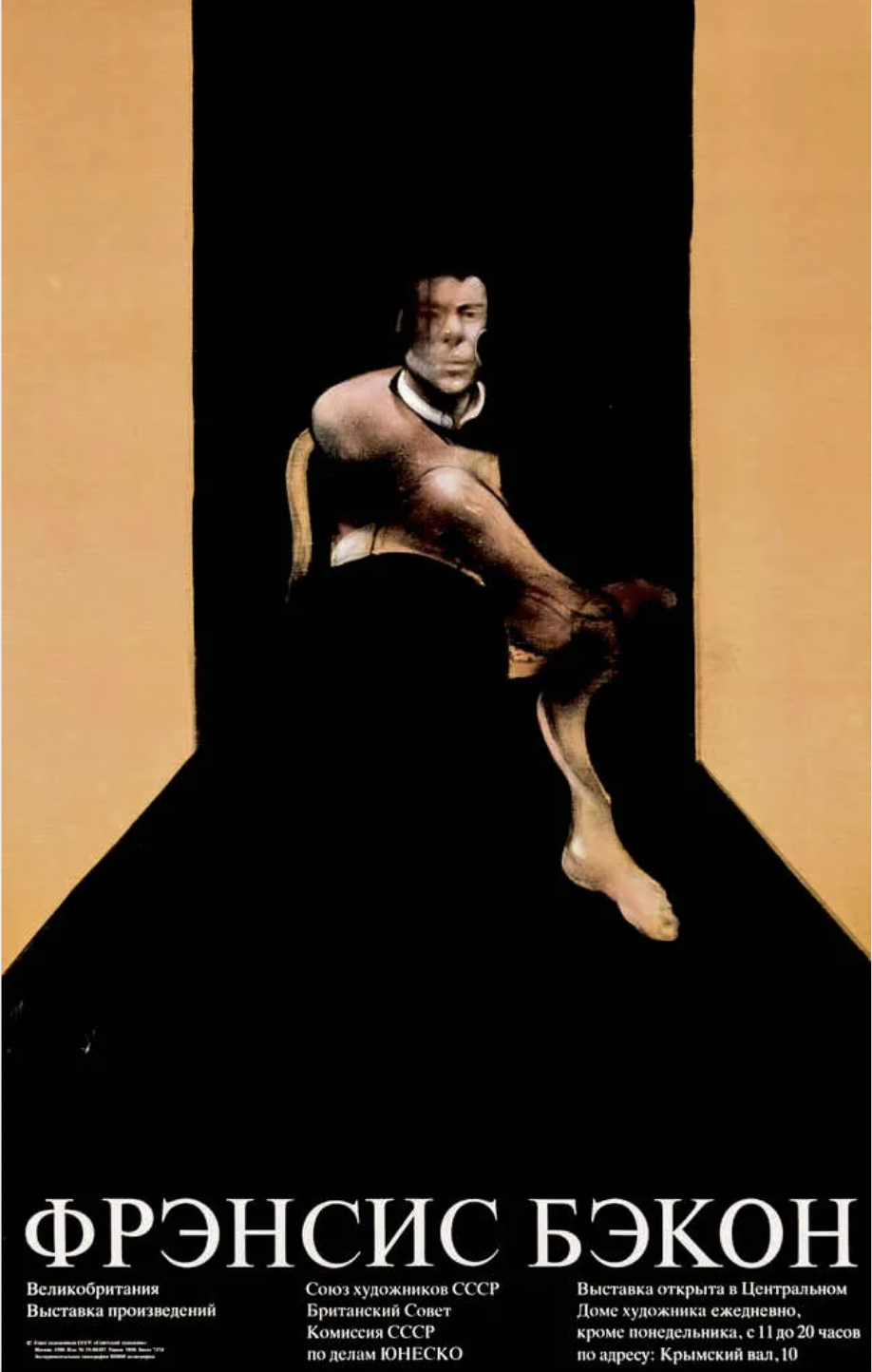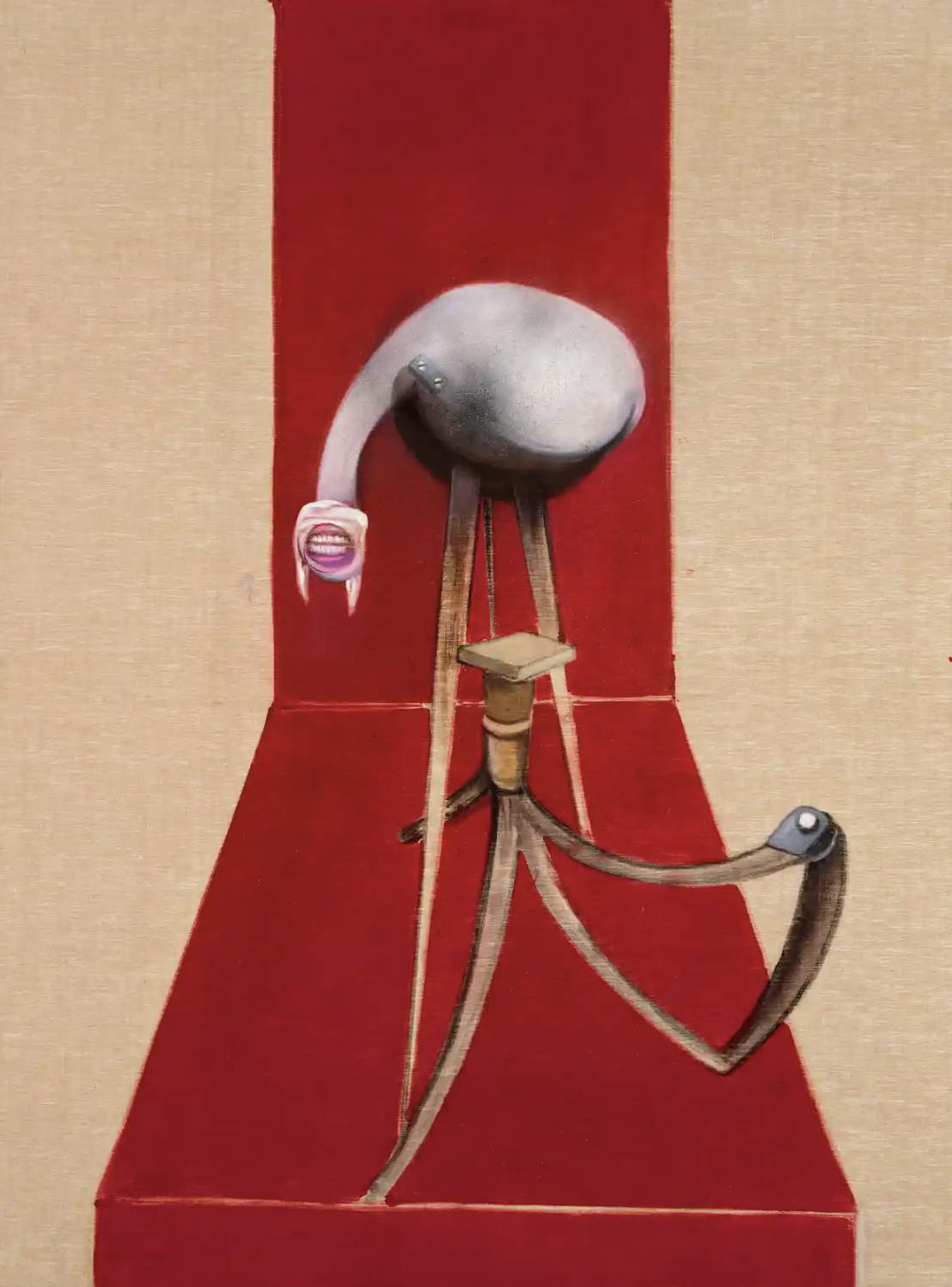a russian icon, a fashion designer, a spy and an artist: under the spell of Elena Khudiakova
Elena Khudiakova. Copyright James Birch, Courtesy of Dadiani Fine Art
When I began researching a painting we bought recently of a jar of Mayonnaise, a spoon and a salad by a soviet artist called Elena Khudiakova it was a bit like scratching one of those multi-game scratch cards and winning all of them. Though there is little to find online about Elena Khudiakova what is there for excavation is fascinating; a sparse breadcrumb trail left behind, dotted around cyberspace like nuggets of gold waiting to be found. Khudiakova’s life has been scantily documented which is mystifying given the different worlds she orbited in quite a short life - for someone so reputedly beguiling and whose life story is more than just ‘something to tell the grandchildren’ Elena is an enigma; esoteric and ethereal.
Elena Khudiakova was born in Moscow in August 1957 into a military family, her father was something high up in the military so Elena went to the better class of Russian school before studying art at the Moscow Architectural Institute. It was a disciplined and traditional training in art. Elena was not allowed to apply oil to the canvas for seven years according to the rule of the time.
In her twenties Elena was encouraged by her surroundings and the change in Moscow’s political climate to embrace fashion, reconstructing outfits based on sketches by the early 20th-century constructivist designers Nadezhda Lamanova and Varvara Stepanova. Elena adapted these functional designs to the mood of the 80s. Fascinated by the early Soviet aesthetic she was one of the first to rework in a subversive way the uniforms and military imagery of the Stalinist period.
Khudiakova’s designs were typically deep red with confident silhouettes in luxurious fabrics; expect billowing ballgowns covered in planes, ships and tractors showcasing Soviet strength; skirts with images of Soviet workers. Traditional overalls were fitted with badges of Soviet buildings, and a raised neckline became the kremlin skyline: “It’s like a Russian march,” a young Khudiakova explained to a “This Morning” ITV presenter in the late 1980s (below).
“Khudiakova’s designs were perhaps more tongue-in-cheek than state-sanctioned, so it was little surprise that she left Moscow for London in 1989 as a young woman, one of the first Russians to leave under invitation, only venturing back to Russia infrequently after the collapse of the USSR in 1991.” (Another Magazine). “She said ‘I can’t do anything more with my fashion in Moscow.’ She was one of the first people to leave during the Perestroika period. Beforehand, the only way a Russian woman could get out was to get married,” remembers her art dealer and close friend James Birch, who first met her in 1985. “London was quite shocking for her. If she went to a supermarket to get some butter, there were so many different ranges of butter that she didn’t know what to do.” (Another Magazine).
Her fashion designs were revered by collectors such as Elton John, who bought one of her re-imaginings of the Stalinist uniform, or fellow designer Vivienne Westwood, whom she worked for from 1994-2010.
Elena Khudiakova began painting in London whilst living on a houseboat on the Thames. Khudiakova's paintings were a series of images painted entirely from memory, painting objects familiar to anyone who came of age in the old USSR: dolls in native costumes, a television set broadcasting ballet, mass-produced trinkets of Lenin’s face and of heroic workers holding hammers and sickles. Though Khudiakova made a new life in London, memories of her Soviet childhood continued to shape her work. Her art was well received; Charles Saatchi bought her entire collection of early artworks.
Elena’s work was exhibited at the Birch gallery, the Conran Fine Art Gallery in Soho, the Anthony Reynold’s Gallery, the Russian Cultural Centre, Pushkin House and the Russian embassy, to name a few. Khudiakova was respected and adored by both the art scene in London and by the friends she had made; she was admired by Francis Bacon who described her as “exquisitely beautiful and enchanting company” a friend with whom she regularly dined with. It is reported that Francis Bacon’s childhood friend and art dealer and gallerist James Birch proposed to Elena (to his parents dismay as she was reported to be an informant for the KGB).
“People enjoyed her company. She was this exotic player,” Birch recalls for Another Magazine in 2015. Birch and Khudiakova met in Paris when Birch was meeting Sergio Klokov, a Russian ‘fixer’ who was instrumental in helping Birch put on a show in Moscow. Birch recalls that Khudiakova kept going away and coming back after each course, each time she returned she was wearing a different outfit of her own designs, hoping to catch Birch’s eye knowing he was influential in the west. She eventually came to live with Birch in London. Birch found out later that Khudiakova was reporting back to Russia everything that Birch did during this time. Birch was offered to buy the KGB files at the time by someone for £500 though he regrets it now he declined at the time and would love to see what they detail now. Birch recalls how his telephone bills were astronomical due to her making calls to Russia. Though hurt he now has a certain amount of acceptance and understanding for the situation “I found last year that if she hadn’t reported back, someone in her family would have got in trouble” (James Birch, Bacon in Moscow)
Birch recently wrote a memoir in 2022 called ‘Bacon In Moscow’ accounting his quest as a young British curator to mount a groundbreaking retrospective of Francis Bacon’s work in the Soviet Union at the newly refurbished Central House of Artists, Moscow in 1988. Some 400,000 people visited the exhibition during its six-week run, many queuing for hours for a chance to see Bacon’s portrayal and vision of humanity.
The Guardian reviewed the book as a “darkly funny account of art behind the iron curtain” and Grayson Perry, a friend to Birch and acquaintance of Khudiakova said it was a “rollicking cultural adventure... fascinating and true'.
Birch exhibited Khudiakova’s artworks in 2015 when sadly she passed away “This exhibition is a tribute to the art and life of Elena Khudiakova. Her untimely death has robbed the world of a person of extraordinary talent and spirit.” Birch. Her sudden death serendipitously on St Elena’s day in 2015 came as a shock to those that knew her. The Telegraph obituary shared the news: ‘Elena Khudiakova has died aged 57, was a versatile and engagingly bohemian Russian artist and fashion designer’. Khudiakova had been in the midst of working on a new series of more pop art paintings sourced from nostalgic memories of her childhood.
While it is odd that there is so little information online about Elena Khudiakova it is clear she was a soviet sensation far too shiny to remain in the shadows; her spirit lives on through her paintings, designs and in the stories of people like Birch who knew the “Raven-haired Russian beauty'“ the best and were lucky enough to know her.
Click on the images below to find out more about our painting by Elena Khudiakova.


